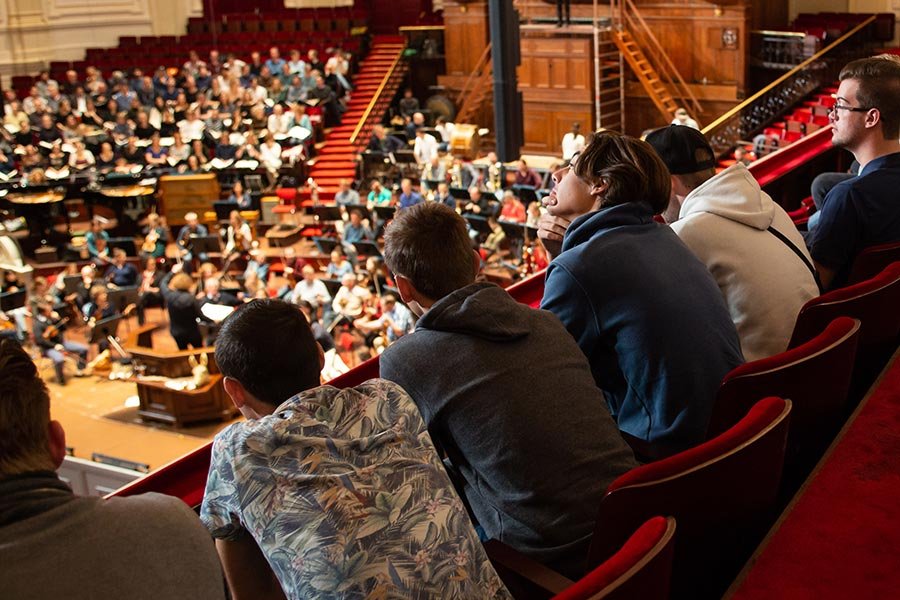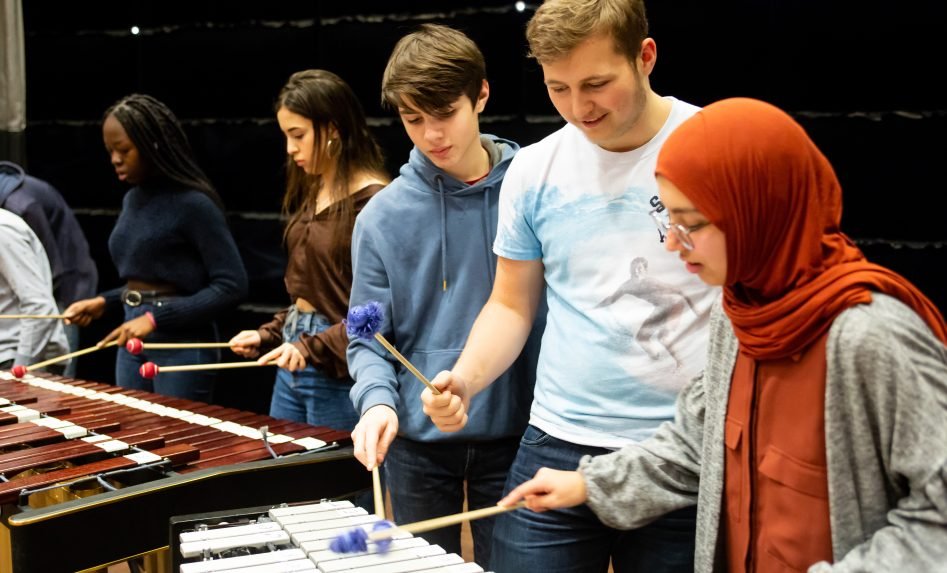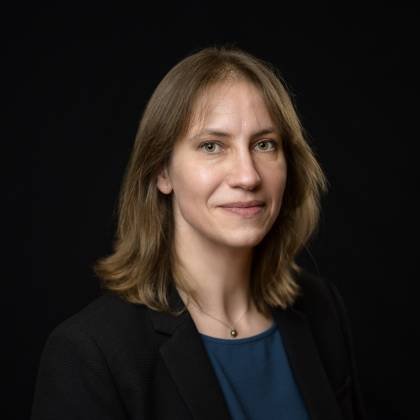Attending a rehearsal, taking part in a workshop presided over by a member of the orchestra or taking a tour of the Concertgebouw. The Concertgebouw Orchestra inviting young people to take a step closer to the world of classical music.
On stage and backstage
A whole classroom getting a behind-the-scenes look at the Concertgebouw and the Concertgebouworkest? That’s exactly what Onstage and Backstage offers secondary school pupils.
Pupils in their last two years of secondary school attend part of a Concertgebouw Orchestra rehearsal in the Main Hall of the Concertgebouw. Prior to the rehearsal, they get the chance to meet orchestral musicians and are given an introduction to the music they’re about to hear. A tour of the Concertgebouw follows the rehearsal.
Introduction and rehearsal

Workshop with a concert
Experimenting with composition in a special workshop, then attending a concert by the Concertgebouw Orchestra in the Main Hall of the Concertgebouw with the whole class.
This project has been specially developed to help pupils understand how a piece of music is structured and to let them experience how they can use its building blocks to create their own composition.
With this deeper understanding, they will experience the concert in a completely new way.
Make your own composition

Projects in collaboration with the Concertgebouw
